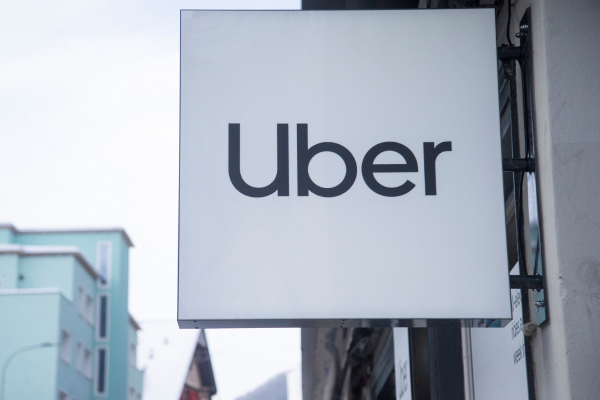Experiential retail: shopping evolves into entertainment
Jeremy Swinfen Green outlines one way that the High Street can reinvent itself – by turning shopping into “shopper-tainment”

For many people, shopping is no longer a chore like cleaning and ironing. Increasingly, as disposable incomes have risen, shopping has become more of a leisure activity in itself. Many retailers have recognised this change in consumer feelings and are providing more welcoming retail environments, including seating areas, cafes, visual and audio entertainment and more exciting interiors.
They feel that it is worth investing in retail environments because, despite the rise in e-commerce, in-store shopping remains the dominant channel in UK retail, accounting for 71.8 per cent of all retail sales in 2023.
Key challenges
Despite the continuing strength of physical retail, the loss of nearly a quarter of retail spend in the UK has taken an obvious toll on the High Street, with many premises lying empty or taken by fried chicken takeaways, charity shops and vape stores.
In addition to the competition from online retail, the High Street faces other challenges. Business rates put them at an unfair disadvantage compared with online. Local councils, desperate for revenue, punish drivers with ever-increasing parking charges. The closure of banks and post office branches reduces footfall even further.
Building back better
Most consumers still view High Streets as critical parts of their community and important places for socialising. In fact, nearly a third of shoppers say that socialising is an important reason to visit the High Street. But if their experience when they arrive is dull or unsatisfying, they will continue to migrate to online retailers.
Landlords can play a part here by prioritising a mix of destinations in the High Street, including restaurants, bars, cinemas, gyms and other entertainment venues. But retail must also play a part. And to do this, they must look inwards.
First, they must fix the basics. All too often, the choice in physical stores is much smaller than online. While there are reasons for this – space for stock is expensive – there are workarounds such as using physical stores as “display cabinets” where customers can see and touch goods and ask questions of well-informed sales staff, before ordering for rapid home delivery.
Service in store should be exemplary, with assistants incentivised to be friendly and helpful and to watch out for shoppers who are clearly looking for help: AI can assist here (and the same technology can be used to reduce theft). Taco Bell uses AI to assist with voice recognition, something that could be very helpful in retail locations that attract a mix of nationalities with different accents.
Retail assistants should be supported by online resources so that they can answer less-common questions about issues important to some customers, such as provenance or manufacturing techniques, as well as more traditional questions about product functions and composition. Chatbots and online kiosks can help them, but they can also help to service customers who dislike being sold to by a shop assistant.
Retailers also need to embrace online retail and cleverly amalgamate it with their High Street shopping experience. For example, online shoppers should be able to reserve an item for inspection in a designated store and, once they are happy with the purchase, choose between picking it up or having it delivered. Consumers in shops should be able to (indeed, be encouraged to) buy online and specify home delivery: enabling this will close the loop between online and offline retail, a valuable strategic addition to customer data.
The rise of shopper-tainment
However, building back better won’t be sufficient. Retailers need to take a big step forward in their attempts to woo customers back to physical shops. High Street shops need to evolve beyond just shopping – into spaces of experience that deliver entertainment or even learning.
Why will a move to shopper-tainment work for retailers? It has the potential to change the retail landscape in their favour by giving people a reason to visit shops beyond simply buying things.
Shopper-tainment is a strong response to the shift in consumer preferences, from material goods to experiences. In addition, the enhanced consumer engagement from shopper-tainment builds brand and ultimately drives sales. And not only that, providing entertainment has the potential to diversify revenue streams. This opportunity will be particularly important with Gen Z, who often prefer to take part in social entertainment rather than going to the pub.
While there are many different ways to drive value from engaging in-store shoppers with some form of activity beyond retail, two particularly powerful options are the provision of entertaining experiences and opportunities to learn.
Entertainment opportunities include activities that involve social contact but also activities that are fun to experience on your own. Retailers that aim to maximise the potential of shopper-tainment will need to consider both, as not everybody shops with other people. However, with sufficient creativity, many single shoppers can be enticed to join in with others.
Perhaps the most obvious type of retail entertainment is the in-store event such as live music, guest appearances, art installations and seasonal themes. This is not a new idea: Santa has had a Christmas grotto in many stores for decades, while Marvel Avengers have travelled the world. And of course, magic is always a big attraction, as toy store FAO Schwartz knows. While these events don’t always drive sales directly, they increase footfall into the shop and are likely to generate revenue as a result.
Technology can always add to the fun. This can be as simple as large digital in-store screens, but, increasingly, interactive product displays are on offer to curious customers. Holograms, projection mapping, interactive floor tiles and smart mirrors can transform any dull shop into a playground. Fashion and tech brands such as Nike and Apple use tech-heavy setups, which can include augmented reality and virtual reality, as well as options to design you own trainers, to showcase their products in action and drive sales.
The interactive nature of immersive retail entertainment can be dialled up with gamification such as in-store games like treasure hunts, where retailers such as TKMaxx provide a very limited number of high value items and heavy discounts, or personality tests such as those used by DFS to drive people towards a particular product. These are games that are designed to result in sales, rather than games created for the sake of having fun.
Educating customers in a store is just as important as providing fun for them. Again this isn’t new. Stores such as John Lewis have a heritage in detailed product demonstrations which include cooking and makeup lessons, often for a small fee which is redeemable against a product purchase. Similarly, Hobbycraft offers a range of classes (including at the time of writing an unmissable slime-making workshop for £6).
Building the future
Shopper-tainment is a powerful strategy for any retailer. It drives footfall, grows loyalty and, important for many younger consumers, builds the sort of buzz that can convert into Instagrammable moments.
But it is by no means ubiquitous. The retail industry is fairly conservative, as is natural for a sector that is both beset by low profit margins and a difficult economic environment. However, examples of good practice are building, and along with them proof of the effectiveness of shopper-tainment.
As digital technology decreases in cost and tools such as artificial intelligence, computer vision and virtual reality ramp up their power, it is certain that more and more retailers will discover the benefits of entertaining their customers as well as selling to them.

Jeremy Swinfen-Green
Most Viewed
Winston House, 3rd Floor, Units 306-309, 2-4 Dollis Park, London, N3 1HF
23-29 Hendon Lane, London, N3 1RT
020 8349 4363
© 2025, Lyonsdown Limited. Business Reporter® is a registered trademark of Lyonsdown Ltd. VAT registration number: 830519543





